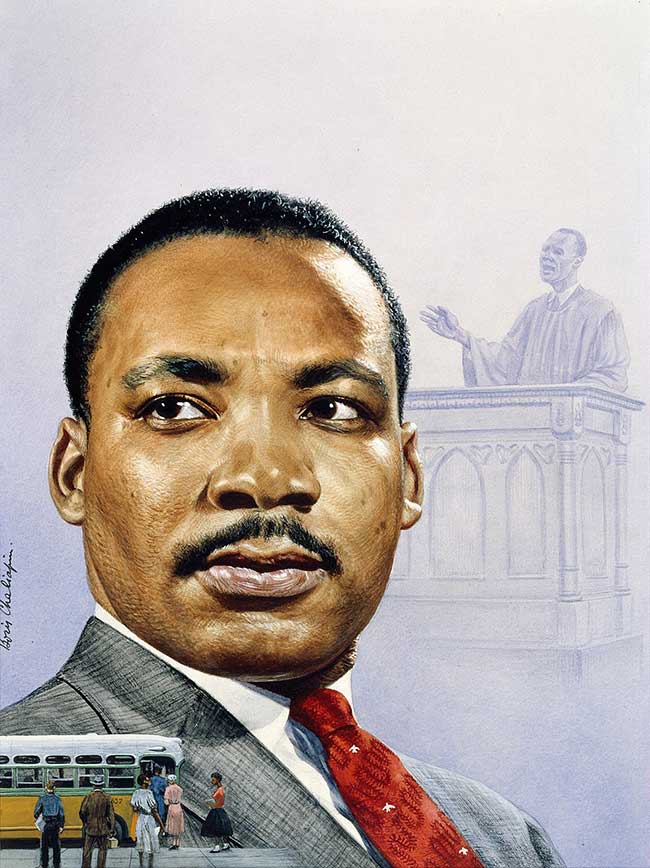Martin Luther King Jr. (1929–1968)

Gift of Time magazine
Born in Atlanta on January 15, 1929, Martin Luther King Jr. earned his doctoral degree in religion from Boston University in 1955. Following completion of his doctoral coursework in 1954, King settled in Montgomery, Alabama, as the resident pastor at the Dexter Avenue Baptist Church. On December 1, 1955, longtime Montgomery resident Rosa Parks was arrested and jailed after refusing to surrender her seat on a public bus to a white male passenger. Four days later, when Parks was convicted of violating local segregation laws, Montgomery’s African American community staged a massive boycott of the city’s bus system. Planned as a one-day protest, the boycott expanded under the leadership of the newly formed Montgomery Improvement Association, which selected the twenty-six-year-old King as its president and spokesman.
King proved to be the ideal choice to orchestrate and sustain the Montgomery bus boycott. As a relative newcomer to Montgomery, he was able to bring together all factions of the black community without regard to past rivalries. Through inspirational addresses delivered at mass meetings in Montgomery’s black churches, King galvanized support for the boycott and clearly articulated the case for nonviolent action, declaring, “We must meet the forces of hate with the power of love; we must meet physical force with soul force.” Continuing for an unprecedented 381 days, the bus boycott ended only after the United States Supreme Court ruled bus segregation unconstitutional.
The success of the Montgomery bus boycott catapulted King into the national spotlight. In February 1957, Time featured his portrait on its cover and published an in-depth profile describing the pastor as “one of the nation’s remarkable leaders.” The cover portrait by Boris Chaliapin, a frequent Time cover artist, portrays King in a suit and tie with a Montgomery city bus in the foreground being boarded by an integrated crowd of riders. The background shows a black-and-white sketch of a figure in ministerial robes delivering an address from the pulpit. The article declared that “King reached beyond law books and writs, beyond violence and threats, to win his people—and challenge all people—with a spiritual force that aspired even to ending prejudice in man’s mind.” When asked about the inspiration for his actions, King replied, “The spirit of passive resistance came to me from the Bible and the teachings of Jesus. The techniques of execution came from Gandhi.”
Learning to Look
- Describe what you see in this portrait. What is in the foreground? What is in the background? How do these elements help to tell King’s story?
- Describe the expression on King’s face. In which direction is he looking? Why do you think the artist portrayed him in this way?
- Why do you think the artist chose to portray King in a suit and tie in the central image, rather than in ministerial robes?
Suggested activity
Have students create their own “One Life” exhibitions, choosing from a list of significant individuals in your era of study. Their exhibition should include at least three images (real ones or student-created) with labels, as well as a curatorial statement explaining the overall impact of the sitter. As they plan their exhibition, have students consider which aspects of their sitter’s life they want to convey, and how these aspects can be best conveyed through images.